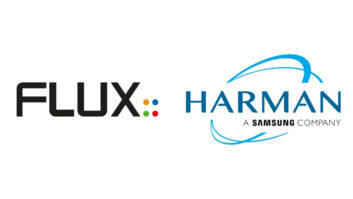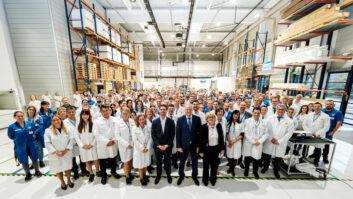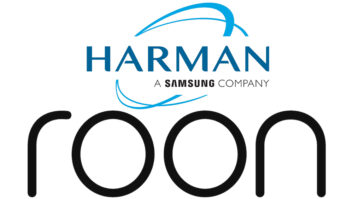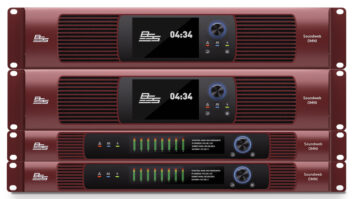By Frank Wells
Northridge, CA (March 2007)–In January of this year, Harman Pro Group announced that former JBL Professional president Michael MacDonald has rejoined the group, taking the newly created position of executive vice president, marketing. This strategic position focuses on integration and coordination between the Harman Pro Group brands (AKG, BSS Audio, Crown International, dbx, DigiTech, JBL Professional, Lexicon, Soundcraft and Studer). MacDonald described his new responsibilities and his vision in a conversation with Pro Sound News.
Upon assuming his new position, Michael MacDonald was given a long list of responsibilities. He condensed that list into a “four quadrant operating scheme” that he’s now working within. “About 35 to 40 percent of my responsibility is in the area of improving systems integration by working as an in house consultant with all the Harman Pro Group Companies,” he says. Another 25-30 percent of MacDonald’s time goes to a second quadrant–working with “big customers and big projects.” That comprises interfacing with retailers like Guitar Center but also project work like stadiums, arenas, airports and convention centers around the world “where somebody needs to go in with a Harman Pro card and be able to sit with a system integrator, a building owner, a facility manager, and speak knowledgeably about all the products and how they go together.”
In that role, MacDonald must be able to “talk about the strengths of all the brands in both technical terms and marketing terms, and have enough authority that they can negotiate the deal and make it stick.” While he’s played that role in the past, while president of JBL Pro, MacDonald says he’s better positioned now to work more effectively with all the stakeholder companies under the Harman Pro umbrella.
MacDonald says that he’s “gotten absolutely spectacular support” from the leadership of the various Harman Pro brands. He explains that while one might assume that “all the brands would be sort of jockeying for position and fighting over resources, in fact it is about no one wanting to take more than their fair share. What I find is this tremendous support and willingness to work together with somebody they perceive as knowledgeable, who has a lot of experience within the company and who knows the market. Coming from being a consultant, it’s exactly what you want to work with. I can provide the brands with market research and tools that provide the right data to make decisions. So all of that has been tremendously good the first couple months; it’s been quite enjoyable.”
Focus groups and outbound surveys are representative of services MacDonald has already been able to provide to Harman Pro Group companies. He says that “coming off of more than four years as a consultant and running a small company where you have to really be fast and do things economically,” one might think that things would be different at a large corporation with ample resources. “It’s the same economic issues,” he says, with everyone looking to work within budget and time constraints.
Marketing communications is the third of MacDonald’s four quadrants, “working with all the companies to maximize PR activities, advertising, trade shows, web activities, outbound email” and similar corporate outreach. The individual brands retain the responsibility for their own marketing initiatives, but MacDonald says that, “what we’re doing is cross pollinating best practice between the companies.” One example offered was an innovative automatic e-mail system at one Harman Pro company MacDonald expects will be adopted for the distribution of PR by all the group companies. Coordinating the brands advertising buys for best value and placement will also be a part of MacDonald’s marketing communications work, as well as exploring the largely uncharted territory of online electronic opportunities.
The final quadrant is acquisitions, where MacDonald will spend around 10 percent of his time supporting Harman Pro Group president Blake Augsburger and CFO Greg Henry as they need “some modest insider support for due diligence and identification of potential candidates and confirming the relevancy of what they’re doing… it’s strictly support, I’m not the acquisitions guy, I’m the technical guy that looks at what they’re doing and goes ‘yeah, that looks really cool.’”
Sitting on top of this quadrant structure is MacDonald’s responsibility to serve Augsburger along with Rob Urry (Harman Pro Group Chief Technology Officer and Harman Music Group president) and Rick Kreifeldt (Harman Pro Group vice president, system development and integration group–the team behind HiQnet), in their work as architects of greater integration between the Harman Pro companies. MacDonald says that after a few months of contemplation, he’s distilled down and clarified a methodology towards those ends–a content focus: “There’s this whole sort of trite contrived world of ‘we want to be customer focused. We want to focus on the customer experience. We want to look at things from the application perspective.’ And yet my whole life as a marketing guy in Pro Audio has been about trying (not too successfully) to drag technical people who are product focused or business focused to switch their thinking away from their internal product to the external application of the product. I’ve been searching for the tool–what is going to be the intellectual tool that drives us towards the place we need to be? Because, obviously, talking about applications and talking about customer focus has not inspired technical people to get there. This led me to a content focus–content is king.”
MacDonald explains that when a system or a product is specified, a dialog is necessary about inbound and outbound content: “Every product, every system, everything we make has a content play attached to it…At the top level we make a sound system, we put mics on the input side and we have speakers on the output side–the content might be a band, it might be the preacher, it might be the school principal, it’s what acoustically gets picked up by a mic, and amplified and broadcast acoustically back into a space so that lots of people can hear it–that’s content.” Manipulation and control of content might also include recording, processing and preparation for feeding alternate distribution schemes like broadcast or distributed media. Content can go beyond the core message to include elements like video or digital signage. A part of the process also looks at the people controlling the process, how they work, and even their ultimate objectives.
The content-based approach is something MacDonald says can be applied to all aspects of Harman’s business, “whether it’s in the transaction level, whether it’s in the product level, whether it’s in the system level, whether it’s in the customer service level–each of those slices into the market. We’ve got to be able to do better job and make the whole experience more seamless, an easier experience for the stakeholders at every point along the chain, whether it’s the guy who’s mixing sound or it’s the purchase agent for the end user, or it’s the dealer or the distributor–and whether they are looking at information about a purchase, whether they’re looking at making the purchase and actually making the transaction or whether they need support after sale.” MacDonald says this focus represents an opportunity for Harman, “and the market is counting on us to exploit this. That’s what they expect…that big brands with a lot of resources behind them and really smart people will be able to do amazing things in the future for integrating these brands.”
While, including MacDonald’s new role, there has been increased integration of the Harman brands in terms of overall marketing, strategic planning and in interconnectivity and control between their respective products, he says that the companies will retain their independent identities: “It’s been the Harman experience that we need to keep autonomy and keep the people behind each of these brands focused on their competitive objectives at each of the levels the brands exist in the market. So, we need autonomy that provides focus for each of the companies regardless of the size. Brands have to be nurtured.”
MacDonald says that his new position is “at one level, a big job, and at another level it’s pretty manageable.” He credits Augsburger, and Mark Terry before him, with an understanding of their market and for laying a foundation for his efforts. Most heartening to MacDonald is “a welcome audience” and the spirit of cooperation between the Harman Pro Group brands that will further enhance his work.
Harman Pro Group
www.harmanpro.com







